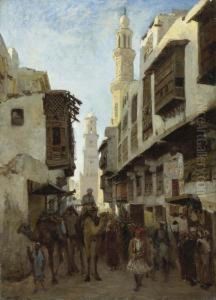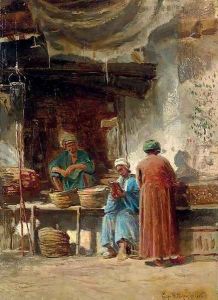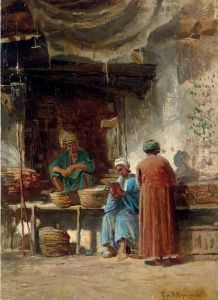Nikolai Egorovich Makovskii Paintings
Nikolai Egorovich Makovsky was a notable Russian painter and a member of the illustrious Makovsky family, which played a significant role in the Russian art scene of the 19th century. Born on April 17, 1846, in Moscow, he was one of four children of Egor Ivanovich Makovsky, an art aficionado and the founding member of the Moscow School of Painting, Sculpture, and Architecture. His mother, Elena Fedorovna, was also an artistic influence, having been a pianist. Nikolai's siblings, Konstantin Makovsky, Vladimir Makovsky, and Alexandra Makovsky, all pursued careers in the arts, contributing to the family’s artistic legacy.
Makovskii's early education in art began under the guidance of his father, and he further honed his skills at the Moscow School of Painting, Sculpture, and Architecture. His artistic endeavors were influenced by the rich cultural milieu of Moscow and the prevailing Romantic Nationalist movement in Russia, which sought to express the nation's distinct cultural identity through art.
Throughout his career, Makovskii was known for his genre paintings and scenes that captured the daily life of Russian people, particularly those from the lower classes. His works often reflected social commentary, depicting the harsh realities of the peasantry with both empathy and critical insight. Despite his relatively short life, his contributions to Russian realist painting were significant.
Tragically, Nikolai’s life was cut short when he died on May 21, 1886, at the age of 40. He left behind a body of work that, while not as widely recognized as that of his brother Konstantin Makovsky, who became one of the most celebrated painters of his time, remains valued by art historians and collectors for its portrayal of 19th-century Russian society and its artistic merit.


